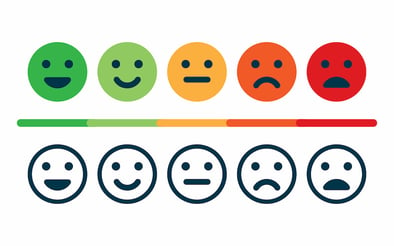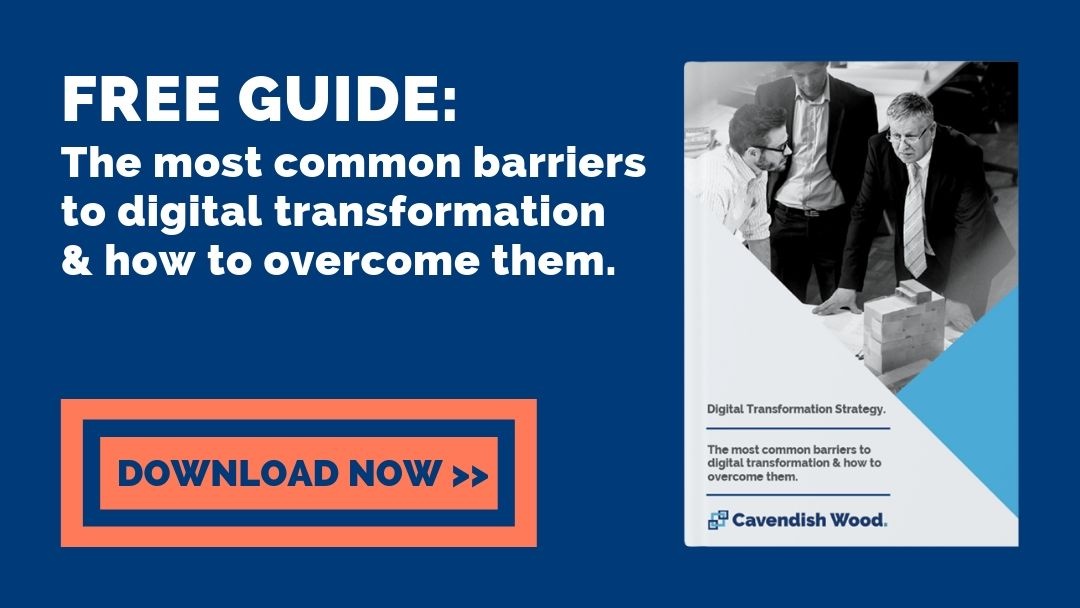
In today’s rapidly moving digital age, the technology and competitive landscape around your organisation are shifting constantly. As a talented CIO or business owner, it’s up to you to ensure your company learns to swim with the tide of digital transformation rather than against it, or you risk being drowned by it.
When you consider this in the context of digital disruption, it’s clear that the only way forward is to embrace the disruption wholeheartedly and commit to making it work. Here’s how you can do this.
Become outward-facing.
It’s no secret that the businesses thriving in the digital age are mostly outward-facing companies. Look outside of your organisation for new technology, new solutions and new ideas, and try to get into a ‘Founders’ mindset. Founders set up organizations to align perfectly with their clients’ needs, using the best technology solutions they can get. You also need to know about the solutions offered by your competitors and new digital players in your industry, which might be able to satisfy your customers' needs better than your solutions do.
Digital disruptors have a big advantage over established companies, because they don’t need to make any huge changes. When your company was founded, it was designed and set up to meet the customers' demands perfectly. In the same way, new, recently established companies are now in the same position. For established businesses, on the other hand, the only option they have is to be as open to external conditions as they possibly can.
Develop new ways to engage your customers and consumers.
We're in the age of the consumer and the experience economy. Everyone (and everything) is connected, consumers’ expectations have changed, and customers now want a personal relationship that can happen whenever—and wherever—they are ready to engage with you.
With all the choices open to customers now, it’s not surprising they expect more from their interactions with companies than in the past, and if you truly want to be part of the digital disruption revolution, you need to give it to them. Putting in place a sound digital customer engagement strategy that is customer-centric, committed, collaborative and creative enables you to give your clients the kind of experience they expect and also build relationships that work across any devices or channels.
Don't overlook your partners and suppliers.
Technology is changing every aspect of the business supply chain, from manufacturers’ inventory systems to workload management software for contractors. Digital tools are improving communications between various supply chain players, and predictive analytics makes it possible for us to use data to discover and match the demand of customers.
CIOs who wait to see what options their suppliers present to them risk being in the position that they have to accept digital methods that don't work for them. It's far better to take ownership of the digital disruption yourself, and become a driver of the kind of change that works for your business.
Find out what your competitors offer.
Now, there are new ways to keep up with your competition. Use digital disruption to your advantage by using machine learning and artificial intelligence to improve tasks like your competitor research.

Companies have done this type of research since the beginning of business to find the answers to questions such as:
- What position does our company hold in the market place?
- What is our percentage of market share, and
- How can we work out what our future revenues will look like?
Get real-time information through technology and build up a database of what your competitors are offering in your industry. You can also find out how their products and services compare with yours, and keep up with (or even overtake) their new activities.
Put your customers first.
Putting your customers first is an important part of digital transformation. This goes hand-in-hand with the founder way of thinking, but it doesn’t end with setting up the company.
There are multiple technological options you can choose for your customer relationship management (CRM), for example. There are also digital marketing functions that work very well, such as the generation and nurturing of leads, and you can even upsell and cross-sell based on messages sent to customers that are triggered by specific events in their lives.
By becoming a digital disruptor, you’ll be able to show how creative you can be for your clients, which they need to make them feel appreciated and valued.

Get the right leadership.
Implementing a successful “digital-first” business model will do wonders for your company, but making it happen requires the right transformational leadership as well as strong innovations in technology. Don’t expect elderly managers to be able to transform themselves overnight into digital natives. Instead, look for people who are already comfortable with the technology you’re introducing, who understand how it can help them do more in less time, and who aren’t stuck on “the way we have always done things”.
It’s all about company culture.
Effective digital transformation depends on changing the company’s culture at grass roots level, because it relies on every employee being willing and able to adopt completely new ways of working. To make this happen, you’re likely to come up against resistance to change among your staff. You will also have to overcome accountability issues, fear, and the use of false logic.

Digital disruption is no longer a vague idea put forward by analysts and vendors, though. We were able to see evidence of this in a recent survey from Forbes Insights, which showed more than a third of executives are finding themselves directly affected by competition from more digitally-focused companies in their industries.
The final analysis.
Increasingly, company CIOs are finding themselves between a rock and a hard place, with a market that demands digital transformation, competitors who are delivering it, and workers who are resisting it. At the end of the day, becoming a digital disruptor isn’t, after all, a “nice-to-have,” but more of a critical shift your company needs to make to survive the revolution.
There really is only one way to compete with digital disruption, and that is to swim with the tide and become a disruptor yourself. If that feels like an impossible task, think about the idea of hiring a consultant with transformational leadership experience to lead you through it.

